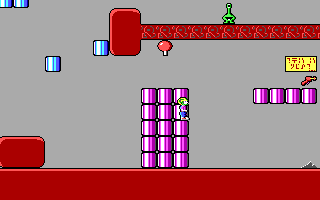Henry Panic
Banned
Commander Keen is seen as a legendary franchise that 'proved' computers could have colorful scrolling platformers and is considered the series that launched ID Soft into celebrity status, leading to their work on Wolfenstein and Doom.
It's often considered one of the biggest technical achievements in gaming and an important milestone.
My question is: why?
Were there some DOS users who locked themselves from the outside world? Have these last few decades of poor journalism allowed this story to go unchallenged so long it stuck?
Let me show you why this shocks me in an extreme way.
Here is Commander Keen:


Here is an Amiga game from the same time:

What exactly are people saying that Carmack accomplished with Commender Keen?
I just saw a history video on a big game site that talked about how important Commander Keens impact was on the industry, and how Carmack used his magic fingers to produce something that no one else was able to do. It's a very common tale that's been around for decades.
But how do you look at Commander Keen next to a contemporary and still honestly believe that?
I don't see a single advantage Keen has over Spellfire. Keen looks like something a college kid threw together in his bedroom overnight for a college project. Due the next morning.
It's often considered one of the biggest technical achievements in gaming and an important milestone.
My question is: why?
Were there some DOS users who locked themselves from the outside world? Have these last few decades of poor journalism allowed this story to go unchallenged so long it stuck?
Let me show you why this shocks me in an extreme way.
Here is Commander Keen:


Here is an Amiga game from the same time:

What exactly are people saying that Carmack accomplished with Commender Keen?
I just saw a history video on a big game site that talked about how important Commander Keens impact was on the industry, and how Carmack used his magic fingers to produce something that no one else was able to do. It's a very common tale that's been around for decades.
But how do you look at Commander Keen next to a contemporary and still honestly believe that?
I don't see a single advantage Keen has over Spellfire. Keen looks like something a college kid threw together in his bedroom overnight for a college project. Due the next morning.

